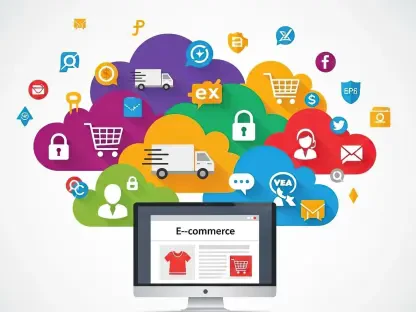In today’s rapidly evolving digital landscape, the role of AI in customer success has become an increasingly relevant topic. To delve deeper into this, we are joined by Zainab Hussain, a seasoned e-commerce strategist with a wealth of experience in customer engagement and operations management. Her insights help us understand the challenges and potential that AI holds for customer success teams as they gear up for 2026.
Can you explain the significance of AI in customer success teams by 2026 according to the EverAfter’s 2025 Digital Customer Success Benchmark report?
AI is seen as extremely significant, as 72% of customer success teams consider it “critical” by 2026. The report emphasizes that without integrating AI, teams might lag in achieving the strategic advancements required in customer success.
What percentage of CS teams are currently deploying AI technologies, and how many have managed extensive deployment?
As per the report, while a significant 72% advocate for AI’s importance, only 32% of teams have a single live use case, with a mere 3% achieving extensive deployment. This highlights a significant gap between the recognition of AI’s potential and its practical application.
Based on the report, what is the leading barrier that prevents CS teams from advancing AI implementation?
Data quality is the predominant barrier, cited by 27% of respondents. This challenge surpasses concerns around budget and skills, indicating that without clean data, even the best AI solutions can’t perform effectively.
How does the concept of “pilot paralysis” affect the industry, and what percentage of the market is affected by this?
Pilot paralysis, a state where teams remain stuck in testing phases without moving forward to actual deployment, plagues nearly half of the market. With 31% in the exploration phase and another 31% running pilots, it’s evident that many struggle to transition from idea to execution.
Apart from AI adoption challenges, what are some persistent operational hurdles mentioned in the report for CS teams?
Operational scaling is prominently challenging, with CSM bandwidth limits cited as the number one obstacle. Onboarding consumes about 27% of CS time, showcasing the need for more effective process management. Moreover, many teams still rely on outdated systems like CRM lists or spreadsheets for outreach.
How does CSM bandwidth pose a challenge for scaling, and why does onboarding consume a significant portion of CS time?
CSM bandwidth is a crucial issue because teams are simply stretched too thin, tackling multiple tasks concurrently. Onboarding, a critical phase for ensuring customer retention and satisfaction, demands detailed attention and resources, hence consuming a large chunk of available time.
What manual workload do early-stage CSMs handle weekly compared to automated tasks?
Early-stage CSMs are burdened with 28 manual interactions weekly, significantly overshadowing the minimal four that are automated. This imbalance underscores the potential for automation tools to alleviate repetitive tasks.
How do mid-market teams perceive routine follow-ups, and what percentage finds it to be their biggest time sink?
Routine follow-ups are seen as a major time sink, with 38% of mid-market teams identifying this as a significant issue. It indicates a need for solutions that can streamline repetitive communication processes.
Could you delve into the “personalization confidence gap” identified in the report? What does it reveal about the industry’s state?
The personalization confidence gap reveals a significant disparity; while 52% are confident in their personalization capabilities, only 33% actually deliver personalized experiences to most of their customers. This gap highlights the challenges in scaling personalized interactions effectively.
What are some of the AI-enhanced practical workflow enhancements that organizations are successfully using?
Practical uses of AI in workflows include automated drafting of quarterly business review summaries (19%), auto-generation of next-best-action tasks (17%), and predictive churn flags (14%). These enhancements allow teams to allocate more time to strategic rather than routine work.
How has AI implementation impacted LifeLoop’s quarterly renewals reporting, according to Jeremy Donaldson?
Jeremy Donaldson at LifeLoop notes that AI has slashed more than 30 hours from their quarterly renewals reporting, a significant reduction that reallocates time towards strategic endeavors.
What approach is Okta taking to incorporate AI tools, and how are they utilizing their customer interface according to Joshua K. Pritchett?
Okta is strategically embedding tools like EverAfter into their customer interface to direct traffic through specific channels first, optimizing engagement and streamlining customer interactions.
Why do you think data quality is considered the “destiny” for AI implementation in CS teams, as mentioned by Noa Danon?
Data quality is critical because AI’s effectiveness hinges on the accuracy and relevance of the data it processes. Without high-quality data, AI tools can’t deliver accurate analytics or insights, making data quality the cornerstone of successful AI integration.
Based on the findings, what is the general outlook of CS teams towards AI by 2026, and how does it compare to their current state of adoption?
CS teams are optimistic about AI’s future, with 72% considering it pivotal by 2026. However, the current adoption is relatively low, as only a third of the teams have even a single live use case. This discrepancy suggests a significant journey ahead to bridge the adoption gap.
Do you have any advice for our readers?
Embrace data quality as your foundation while adopting AI. It’s essential to focus on consolidating clean, relevant data before diving into AI to ensure any solution implemented delivers the intended value and scales effectively with organizational needs.









